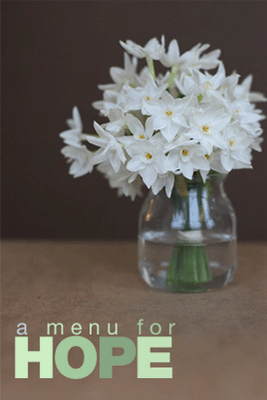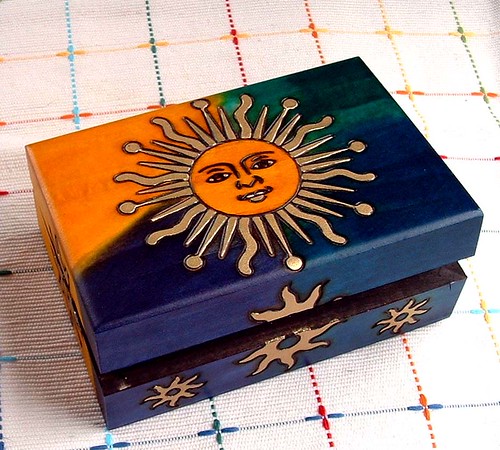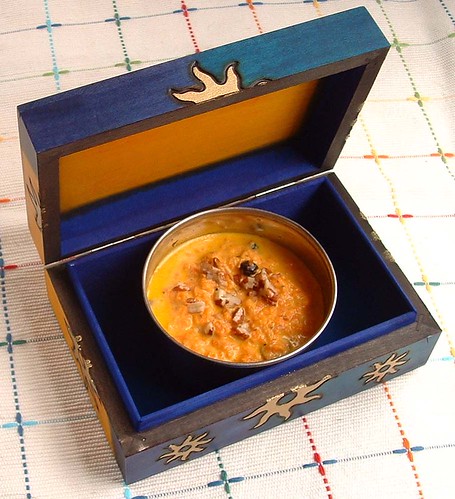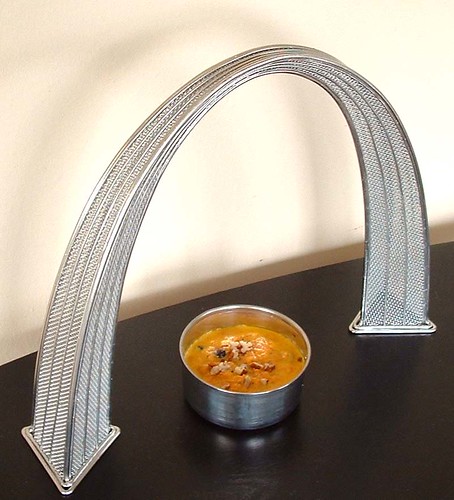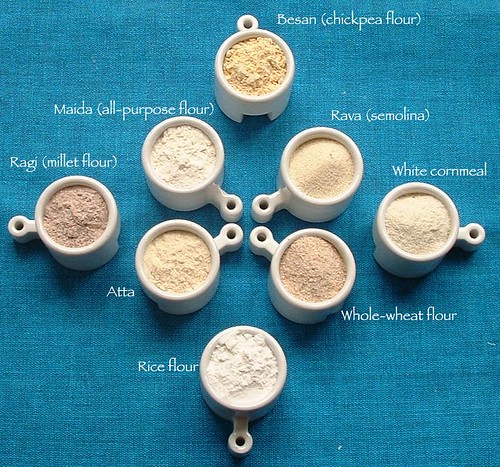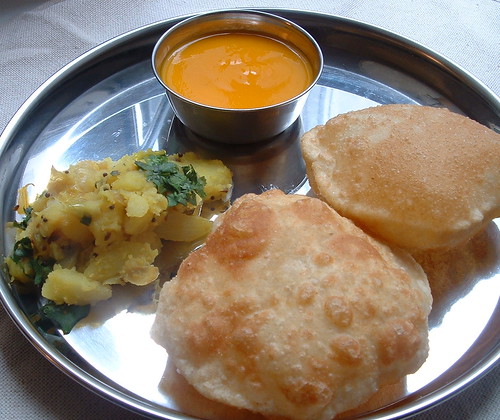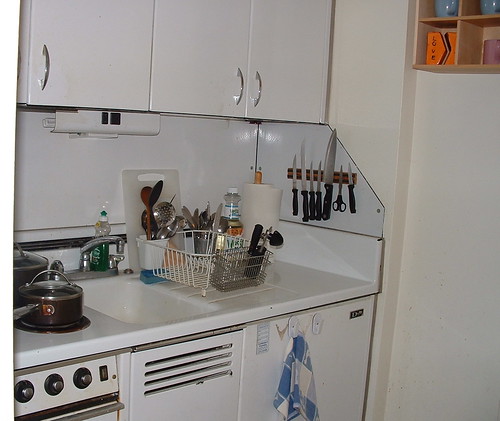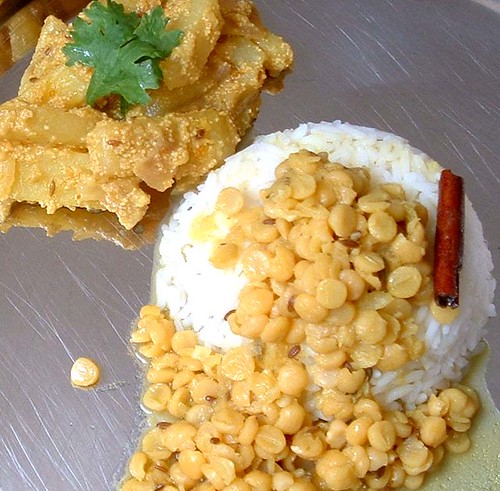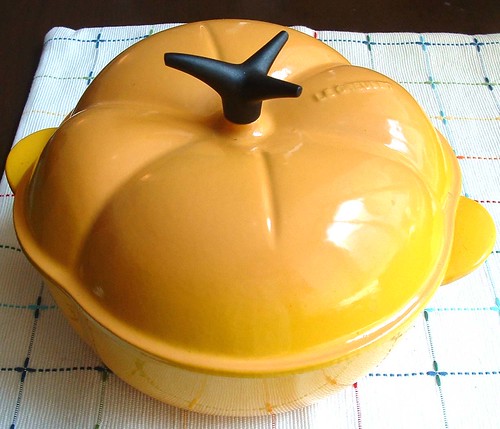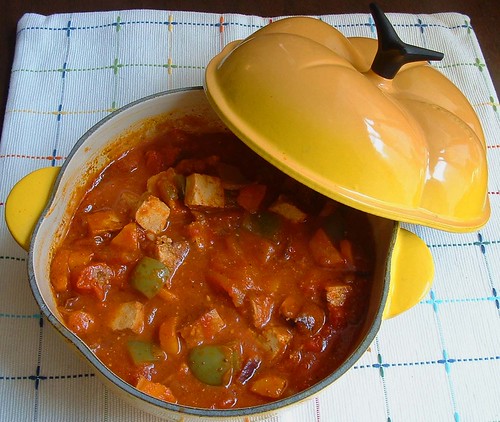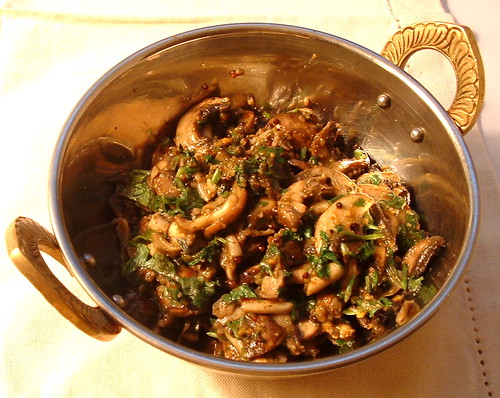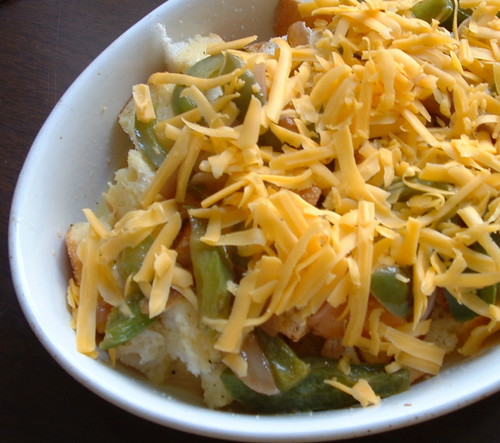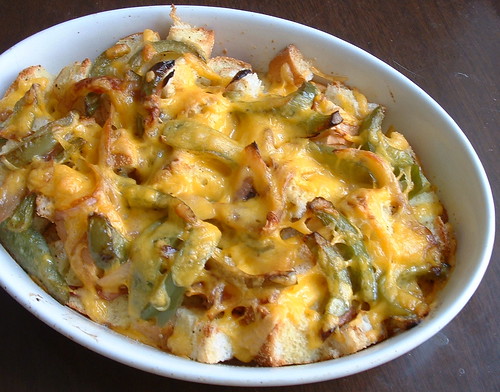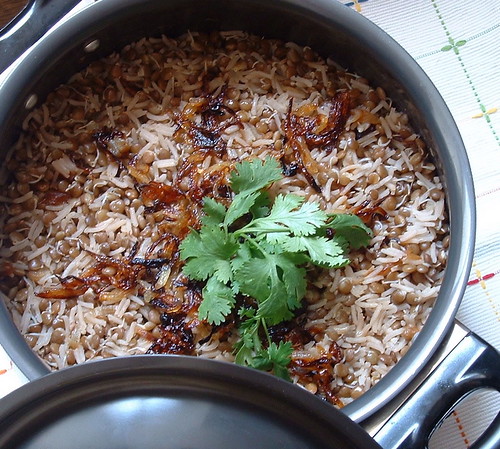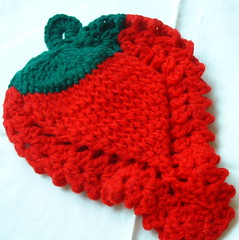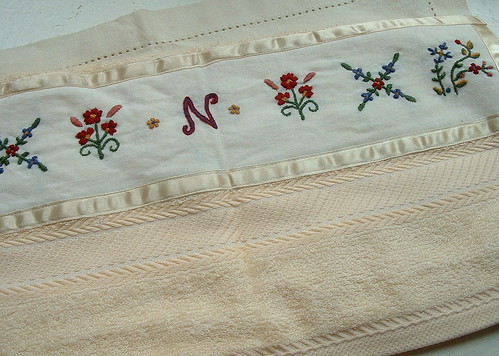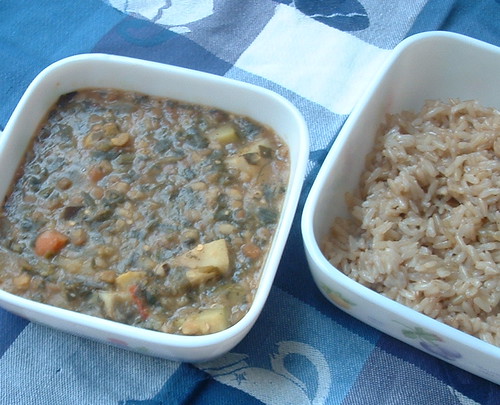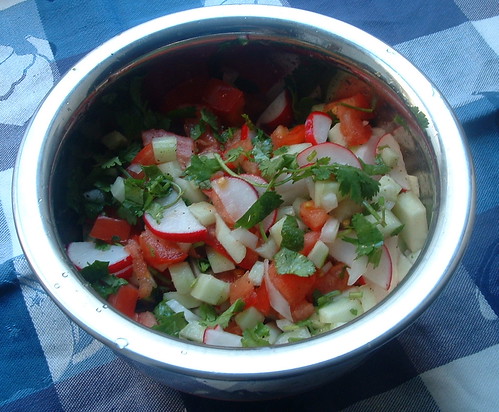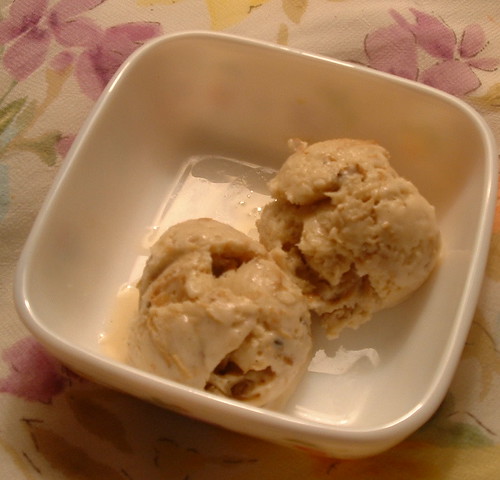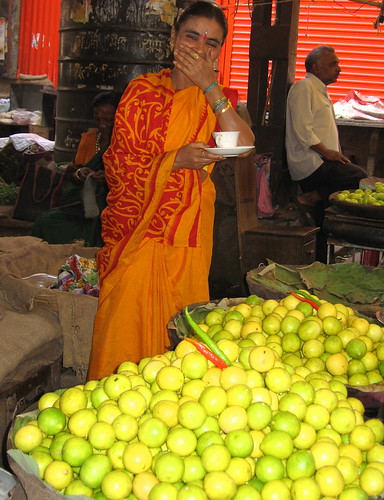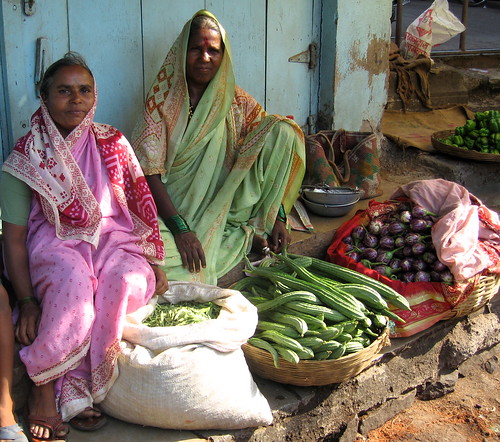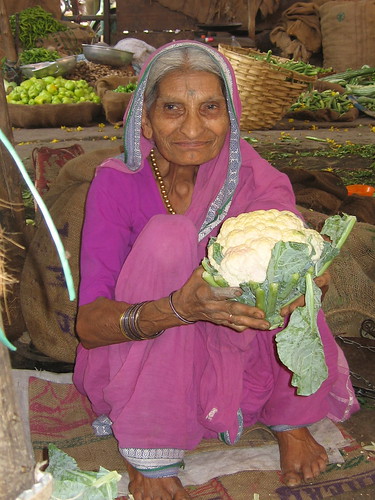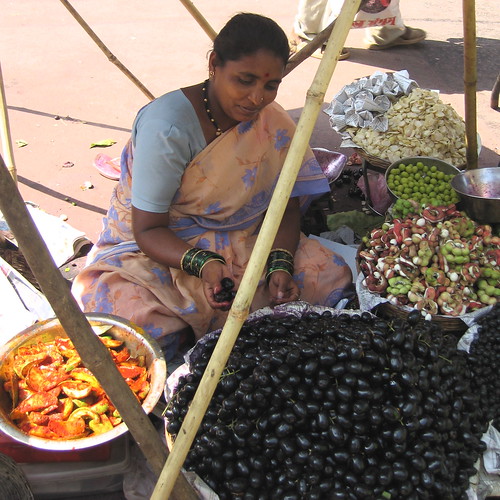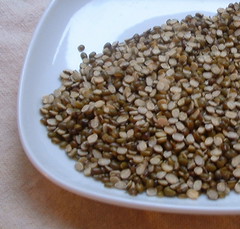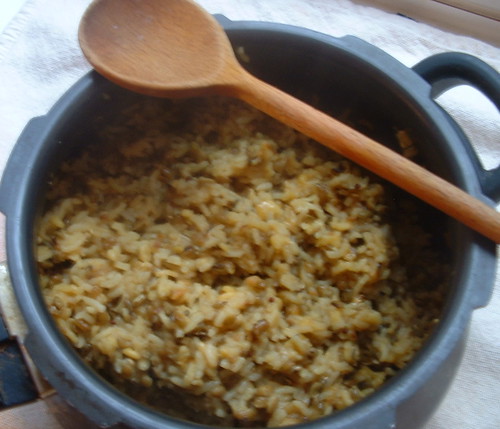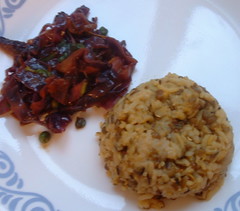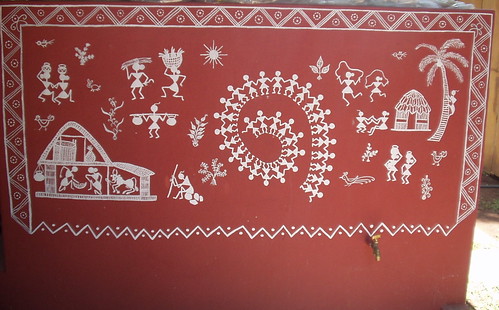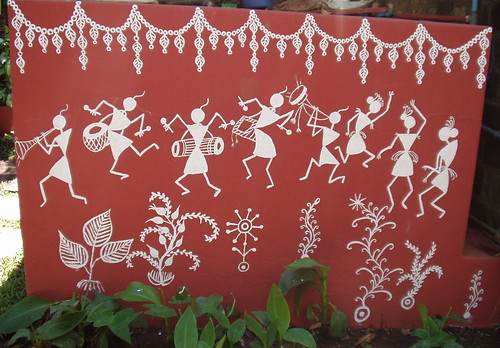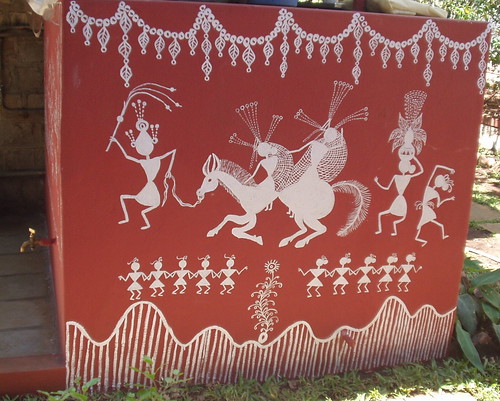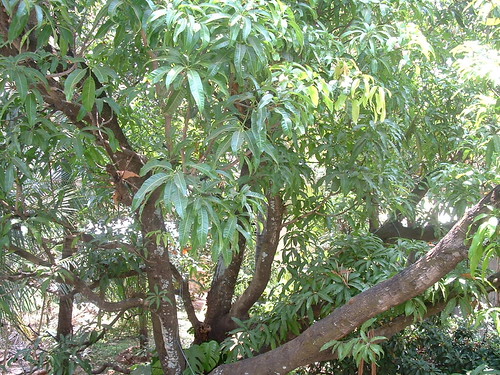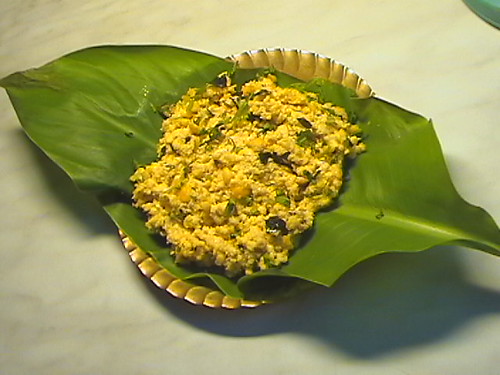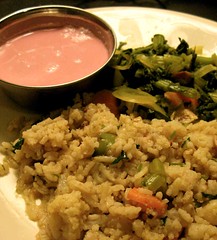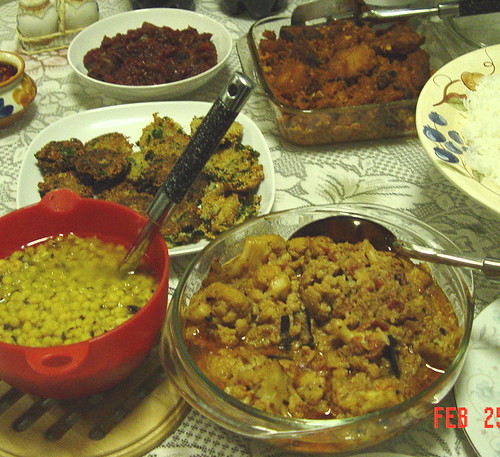Meanwhile, I missed out on so many great foodie events during my blogging break, so I was thrilled when Ashwini came up with the excellent theme of COCONUT for the Jihva for Ingredients event orginally conceived by Indira. Much of the Indian landscape (especially the Southern half) is dotted by swaying, graceful coconut palms, and the coconut is entwined with everyday Indian food. How wonderful to celebrate this ingredient!
When I think of coconut, two sublime food experiences come to my mind. One is the tender coconut water that is sold on Indian beaches everywhere. For a small price, you choose a tender green coconut. The coconut-seller uses a mean-looking machete to hack away the top of the coconut, and then you get to enjoy some of the most sublime juice on the planet, sweet and rich coconut water, a real thirst-quencher. The other memory I have is, when I was a teenager in Bombay, most of the ice cream was from companies that sold princess-pink strawberry ice cream and bright green pistachio ice cream. In short, flavors that were only caricatures of the real thing. Then a company called Naturals came along and turned our concept of ice cream on its head. It launched a tender coconut ice cream flavor that simply took my world by storm. Nothing but some cream and sugar, and a lot of tender coconut bits that melted in the mouth. Naturals still has stores all over Bombay, so try some "TC" if you get a chance!
I have already raved about two of my favorite dishes starring coconut: the sweet fudge-y NAARAL WADI and the tangy, soothing beverage SOLKADI. But coconut steals the limelight even when it is used in a supporting role. In fact, this is how I love coconut best, for the way it transforms everyday recipes into something quite special.
So, today I give you: two dals with coconut. I eat dal almost every single day, and the addition of a spicy coconut paste to dal takes it to another level. One recipe is called Moong Dal Ghassi, a dal redolent with garlic, coriander and coconut. The other is a recipe I am blogging today, for Eggplant Rasavangy, a sweet and sour creation, rich with flecks of coconut.
As days go by, I am more and more obsessed with regional cooking, and this recipe is adapted from a cookbook that (in my humble opinion) is just an excellent resource for South Indian vegetarian cooking:

The book is called Dakshin (the word means "South" in several Indian languages), written by Chandra Padmanabhan. I happened to find it while rummaging through a bookstore, looking for an Indian vegetarian cookbook as a small wedding gift for a colleague. In the end, I have bought a copy for myself as well as several copies to give as gifts. The recipes are just a little bit involved, and I usually end up taking a few short-cuts through them. For instance, this recipe called for toor dal to be cooked on the stove-top until tender and not mushy. Me, I used a pressure cooker as I just cannot pass on the saving of time, fuel and effort. So my dal is mushier than the recipe calls for. The result of the recipes has always been spot-on authentic, though. The food photographs in this book are quite stunning. It is not easy to take photographs of 20 different curries (all shades of yellow and brown) but they pull it off with style. So, here it is: a dal with eggplant and coconut.
Eggplant Rasavangy
Adapted from "Dakshin: Vegetarian Cuisine From South India" by Chandra Padmanabhan
(Serves 4-6, Prep time: 30 minutes plus time for cooking dal)
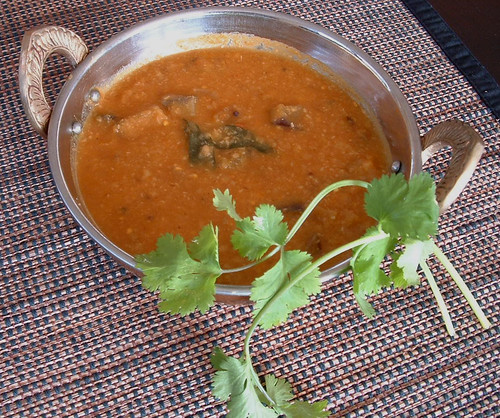
Ingredients:
1 cup toor dal (split yellow peas)
1 tbsp tamarind paste/ lime-sized ball of dried tamarind
1 large eggplant
1 large chopped tomato/ 1/4 cup tomato puree
1 tbsp jaggery/ unrefined cane sugar
salt to taste
Tempering:
1 tbsp oil/ ghee
1/2 tsp cumin seeds
1/2 tsp mustard seeds
5-6 curry leaves
1/2 tsp turmeric powder
1 tsp sambar powder
Paste:
1 tsp oil
1 tbsp coriander seeds
pinch of asafoetida
2 dried red chillies (less or more to taste)
5 tbsp grated fresh or frozen or dried unsweetened coconut
Garnish:
2 tbsp chopped cilantro
Method:
1. Do the prep...(1) Cook the toor dal in a pressure cooker or on the stove-top and set aside. (2) If using dried tamarind, soak it in 1/2 cup hot water for 10-20 minutes, then squeeze out all the tamarind pulp and discard the solids. (3) Chop eggplant into small cubes. If using whole tomato, chop tomato into small cubes. (4) Make the masala paste by frying together the ingredients listed under "paste" and then grinding to a fine paste with a little water.
2. Heat oil in a large pot. Temper with cumin seeds, mustard seeds and curry leaves. Add the eggplant, tomato, turmeric, sambar powder, tamarind juice, jaggery and salt. Stir well, cover and cook until eggplants are tender.
3. Add the cooked dal and masala paste. At this point, check the consistency of the dal. If you find that it is too thick, add half or one cup water (or more, depending on whether you prefer dal to be thick or soupy). Stir well and simmer for 5 minutes.
4. Garnish with cilantro and serve hot with steamed rice.
Love coconut? Check out the JFI-Coconut Round-up where Ashwini neatly presents over 70 recipes for soups, snacks, curries and desserts, all featuring coconut!

